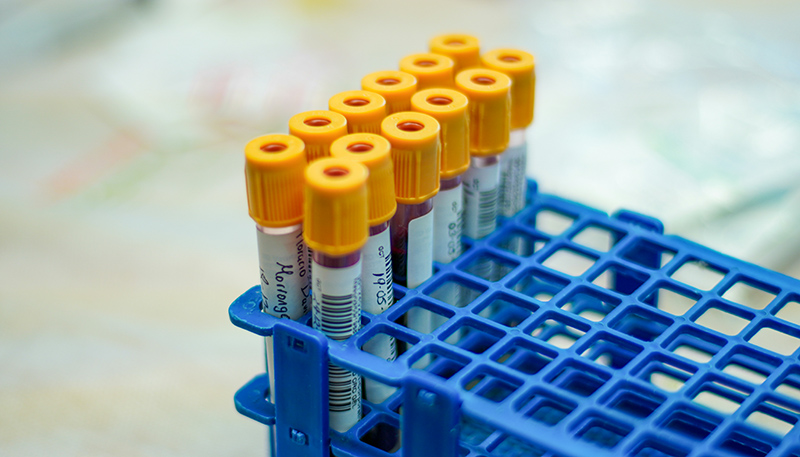Syphilis Cases Soar Among Gay and Bisexual Men
The U.S. is seeing over 200,000 syphilis cases annually, the highest figure since the 1950s.

The United States is now seeing over 200,000 syphilis cases annually, the highest figure since the 1950s.
Imagine the voice of Golden Girls’ Sophia Petrillo saying, “Picture it, United States 1951, I Love Lucy was kicking off its first season, super glue had just been invented, and there were 140,000 syphilis cases reported across the country.”
By 2000, however, decades of public health advocacy and medical advancements, such as the use of antibiotics in early treatment, had cut down cases to just 32,000 per year.
So, what happened? Why are the numbers worse now than they were 24 years ago?
“In the United States, syphilis was close to elimination in the 1990s, so we know it’s possible to reverse this epidemic,” Dr. Jonathan Mermin, director of CDC’s National Center for HIV, Viral Hepatitis, STD, and TB Prevention, stated.
The CDC recently released its STI surveillance report for 2022, the most recent verified data set available. With it, we looked at what might be responsible for the uptick, and the groups of people most impacted today.
Men account for the most cases of syphilis, with the vast majority of those cases occurring among gay, bisexual, and other men who have sex with men, according to the CDC.
The agency reports that these men are “disproportionally impacted by STIs, including gonorrhea and [primary and secondary syphilis], and co-infection with HIV is common; in 2022, 36.4% of MSM with P&S syphilis were persons with diagnosed HIV.” The CDC noted that the disparity is less likely caused by sexual behavior and more by access to quality sexual health care.
Known widely as “The Great Pretender” in medical circles, syphilis earned the moniker by its difficulty to detect in early stages. Beginning symptoms look like many other diseases and infections, so it’s not always caught early.
Syphilis spreads from direct contact with a chancre sore that is often painless and frequently goes untreated. Chancres can be found on the penis, vagina, anus, rectum, and lips or mouth, with the ability to spread during vaginal, anal, or oral sex.
As the number of people diagnosed fell steadily for half a century, so did its prominent place in public memory.
Difficult to detect, easy to spread, and lack of public awareness — it is a vicious sequence we have seen play out before with other epidemics.
A whopping 207,000 syphilis cases were reported in the US in 2022, representing an 80% increase since 2018. Moreover, the rate of congenital syphilis contraction has increased tenfold since 2012.
With the new numbers out, the Biden-Harris administration took notice.
“The syphilis crisis in our country is unacceptable,” Health and Human Services Secretary Xavier Becerra declared in a press release.
The HHS statement included steps the administration is taking to combat rising cases. This includes draft guidelines that outline how some gay, bisexual, and other men who have sex with men and transgender women could use the common antibiotic doxycycline to prevent the onset of syphilis, as well as gonorrhea and chlamydia.
In addition to sexual identity, cases also disproportionately affect young people, as 15-24-year-olds make up half of all new cases. The American Indian and Alaskan Native (roughly seven times higher rate of congenital infection compared to white populations), and Black and African American (31% of primary and secondary cases despite making up 13% of the population) are also disproportionally affected.
Complicating the fight against the syphilis surge is an over-demand for the main treatment (Bicillin L-A). To address this, the FDA announced recently they would temporarily import Extencilline, an injectable drug they say will mitigate the impact of the Bicillin shortage.
Support Metro Weekly’s Journalism
These are challenging times for news organizations. And yet it’s crucial we stay active and provide vital resources and information to both our local readers and the world. So won’t you please take a moment and consider supporting Metro Weekly with a membership? For as little as $5 a month, you can help ensure Metro Weekly magazine and MetroWeekly.com remain free, viable resources as we provide the best, most diverse, culturally-resonant LGBTQ coverage in both the D.C. region and around the world. Memberships come with exclusive perks and discounts, your own personal digital delivery of each week’s magazine (and an archive), access to our Member's Lounge when it launches this fall, and exclusive members-only items like Metro Weekly Membership Mugs and Tote Bags! Check out all our membership levels here and please join us today!






















You must be logged in to post a comment.